| HOME |
 |
 |
|
 There's something about a blonde ... especially when a bit of bleach is involved. Even before the term "blonde bombshell" was coined for Jean Harlow (in connection with her 1933 movie, "Bombshell"), blondes created controversy. For example, there was the New York City judge who said in 1921 that he wanted to bar blondes from sitting on juries: |
|
|
|
However, blondes have always been essential in movies, though blonde actresses often have found themselves typecast. At the same time, turning blonde rescued many careers. Harlow's success set the tone. Obviously there were movie blondes before Harlow, though the most memorable sex symbols from the silent days were Pola Negri and Clara Bow, both with hair that photographed dark in black and white movies. Harlow did more than decorate the screen, she provided comic relief, setting the precedent for countless actresses who would be cast as "dumb blondes" for the next 70 years. Not all of the "blonde bombshells" that followed Harlow would be required to portray airheads, but many began that way. What follows are accounts of interviews I had with four blonde bombshells, all of whom achieved fame, but had limited success. The lives of two of them ended tragically and prematurely,, and one of them became an embarrassment, though she may not have seen it that way. The first example wasn't really an actress, and an argument could be made that she was successful, considering her limitations. |
The woman I interviewed was a bleached blonde, but was no longer a bombshell, not by Jean Harlow standards. She had more comic appeal than sex appeal, but she attracted a lot of attention. Bleached blondes often do. She was known by one name – Dagmar, though she was born Virginia Ruth Egnor in Huntington, West Virginia, on November 29, 1921. However, when she went fishing around for a place to divorce her second husband, Danny Dayton, in 1961, she registered at hotels as Virginia Ruth Seagel. Her first marriage was to Naval officer Angelo Lewis in 1941, and she used her nickname, Jennie, and his last name when she became a photographer's model in New York City in the early '40s. She soon became known for what used to be called "wisecracks." Never at a loss for words, she was encouraged to audition for comedians who used women, usually blondes, for their comic foils. The team of Ole Olsen and Chic Johnson hired her for a musical revue. She later did a Broadway comedy, "Burlesque," with Bert Lahr, which established her as a blonde who was sexy and funny. However, when comedian Jerry Lester hired her in 1950 for "Broadway Open House," NBC's first late night show and the "Tonight" forerunner, he had no idea just how popular the mouthy blonde would become. Lester changed Jennie Lewis' name to Dagmar and told her to wear tight sweaters to show off her large breasts.
Dagmar was given her own show, "Dagmar's Canteen," and there were hints movie offers might be forthcoming. But "Canteen" bombed and the film projects never materialized. For awhile she kept her career alive through appearances on television game shows. She also developed a nightclub act, singing and telling jokes, but dropped the dumb blonde act. She made occasional guest appearances on "The Tonight Show" with Jack Paar, but her nightclub act usually took her to smaller cities, far away from the big-time circuit. When I met her, she was the guest host on "The Mike Douglas Show" in Cleveland by day, but spent her evenings performing at a nightclub in Lakewood, a suburb a few miles west of the city. She was 41 years old, but her press material claimed she was six years younger. She looked at least six years older than 41. She'd always had to fight to keep her figure, but appeared to be losing the battle. She still prefaced her remarks with "Sweeties, this" or "Honey, that" and she was candid about the state of her career. "I'm going down to Miami next," she said, "where I'm dickering for a show of my own. We've been discussing it for a few weeks. It would be similar to 'Tonight' with emphasis on informal conversations with my guests. Honey, I like my work in nightclubs, but I'd love to go back to television." The show, which would have been taped in Miami for syndication to other cities, never advanced past the talking stage. She continued to perform, mostly in nightclubs, and eventually moved back to West Virginia, where she died in 2001 at the age of 80. |
My impression going into the interview was that Jayne Mansfield really wasn't particularly attractive; that she was a dreadful actress, and that her days in the spotlight had been marked by some of the dumbest behavior ever attributed to an actress. But I had also read that Mansfield actually was unusually intelligent and congenial, and was likely to win me over with her charm. That turned out to be true. Her marriage to Mickey Hargitay was wobbling its way to the finish line, but they travelled to Cleveland together in a show of unity they would maintain until after Mariska was born. My story from the interview appeared in the Akron Beacon Journal on December 15, 1963. After setting the stage, the story proceeded like this:
Tragedy awaited Jayne Mansfield. Her movie career tanked after "Promises, Promises." She and Hargitay divorced once and for all. And in 1967 she and a boyfriend, Sam Brody, their driver and Mansfield's three children – Miklos, Zoltan and Mariska – were on their way from Biloxi, Mississippi, where she performed at a nightclub, to New Orleans for a television appearance. It was June 29, about 2:30 a.m., when their car crashed into the rear of a tractor-trailer. Mansfield, Brody and the driver, all in the front seat, were killed, the children in back suffered minor injuries. Stories spread later that Mansfield had been decapitated in the crash, but that was not true, though extensive head injuries was the cause of her death. It's doubly tragic Jayne Mansfield didn't live to see what a successful career awaited the child she was carrying that day in Cleveland. Mariska Hargitay achieved her success playing a role that, in her mother's time, probably would have gone to a man. Ms. Hargitay's career path was just about the complete opposite of the one followed by her mother, and she's gone from being regarded as Jayne Mansfield's daughter — as she was promoted during her early years as an actress — to the point people are more likely to say, "Do you know that Jayne Mansfield was Mariska Hargitay's mother?" |
Well, "sexy" and "blonde" were part of her description, but she's wasn't "dumb" so much as she was not ashamed to use the tools she was given.When we met she told me she had no intention of fighting her sexy blonde image though she felt she was capable or rising above it should she ever choose to try. "I've no illusions about trying to do Shakespeare," she said. "I would not dream of inflicting myself on the public that way." She was called "The English Marilyn Monroe," but in severall ways she was more like Jayne Mansfield. She posed a lot in a variety of bikinis and while she found roles in many movies, starting as a teenager in 1948, she had the misfortune of appearing in films with such titles as “Good Time Girl” (1948); “Lady Godiva Rides Again,” also known as “Bikini Baby” (1951); “Man Bait” (1952); “Young and Willing,” original title “The Weak and the Wicked” (1954); “Blonde Sinner,” original title “Yield to the Night” (1955); “The Love Specialist” (1957), and “Passport to Shame,” later changed to “Room 43” (1958). However, some of those titles were misleading, not that it made much difference. And it would become common knowledge that Dors' private life went way beyond anything she ever did on screen. She had countless affairs and wallowed more and more in vulgarity. Her notorious sex parties made the Playboy Mansion look like a nunnery. But in 1963 she was living in the United States and married to Richard Dawson, better known those days as Dickie Dawson. Yes, the same Dawson who was featured in "Hogan's Heroes" and a few years later would become best known as host of "Family Feud." Dors was considered big box office in England in the 1950s, but her film career stalled when she and Dawson settled in California. "Producers aren't willing to take a chance," she complained. "I guess they'll always consider me England's Marilyn Monroe and cast me accordingly. I don't like it, but I'll go along with it." Dors was born in 1931 in Swindon, about 90 miles west of London, where she went at age 14 to study at the Academy of Music and Dramatic Art. Her real name was Diana Mary Fluck, but joked that she was afraid one day it was would be up in lights and the bulbs that formed the letter "L" would burn out. Dors was her mother's maiden name. She made her first film in 1946, then more than 60 movies after that before she went to Hollywood to do "I Married a Woman" with comedian George Gobel in 1958. She bounced back and forth across the Atlantic for two years, during which time she shed her first husband (Dennis Hamilton), who often used her as a punching bag, and married Dawson. It was during those three years as Mrs. Dawson, resident of California, that Dors started to lose her figure. She was about 20 pounds over her bikini weight when she arrived in Cleveland. Three years later she Dors and Dawson were divorced. She returned to England, married Alan Lake, an alcoholic, and continued to have sex parties at which she taped her guests. She both disgusted and fascinated the British and continued to act, though no longer as a sex symbol but as an often grossly overweight character actor. She died in 1984 at the age oof 52. For a wholesome, but interesting account of Diana Dors life, check out her official website. |
And even if my preconceived ideas about Joey Heatherton were wrong — and I don't think they were — the timing of the interview could hardly have been worse. It was mid-January 1965. A few days before she phoned, she was a guest on the first episode of NBC's "Hullabaloo" when she introduced a new dance named in honor of the program. "It will be the next big dance craze," she would tell me. "It's a combination of the frug and the hully-gully and anyone can do it." Perhaps, but I hadn't the faintest idea what she was saying, since I didn't know the frug from the watusi or the hully-gully from the mashed potato. But that was not why the timing of her call was so unfortunate. Her gyrations on “Hullabaloo,” no matter what they were supposed to represent, struck many viewers as obscene. The reaction was nowhere near as strong as when Elvis Presley’s wiggled his hips on “The Ed Sullivan Show," in 1956, but there was some controversy — some of it undoubtedly engineered by Heatherton's agent — but it was the young actress-singer-dancer who had face reporters. By the time she phon Akron, she clearly was not pleased with the state of American journalism. Joey Heatherton was born Davenie Johanna Heatherton in 1944 in Rockville Centre, New York, daughter of Ray Heatherton, a singer, Broadway performer and early television performer. She soon joined a large group of young actresses who were featured, it seemed, on every prime time television show, with an occasional movie role. Cute Joey Heatherton turned into pouty Joey Heatherton. Playing troubled and troublesome teens her acting specialty. At the same time, newspapers and magazines were deluged by photos of a scantily-clad Joey Heatherton in the standard, often silly "don't you think I'm sexy" poses. She was visible through the 1960s, though her film and TV credits tapered off in 1966. Her films include "Twilight of Honor (1963) with Richard Chamberlain; “Where Love Has Gone” (1964), with Bette Davis, Susan Hayward and Mike Connors, and "My Blood Runs Cold (1965), a horror film with Troy Donahue. The most publicized of those was "Where Love Has Gone," based on the Harold Robbins version of Lana Turner’s affair with mobster Johnny Stompanato that was abruptly ended when Turner’s daughter, Cheryl Crane, stabbed and killed Stompanato. Playing the daughter, Heatherton added to her tough and troubled image. Her personal life attracted unwanted headlines after she married Dallas Cowboys receiver Lance Rentzel in 1969. A year later he was arrested for exposing himself to a young girl. The Rentzels separated and were divorced a couple of years later. Still, she went further than many would-be stars who came along in the 1960s, though she might have been well advised not to follow the Mamie Van Doren-Edy Williams route, which veered off to ridicule, then passed through desperation — the Playboy spread — and wound up in oblivion, though thanks to the internet and this website in particular, it now possible for performers such as Joey Heatherton to remain a legend, at least in someone's mind. She will be 79 years old on September 14. I'm thinking that can't possibly be true, but it is. |
| HOME • STARSTRUCK • CONTACT |
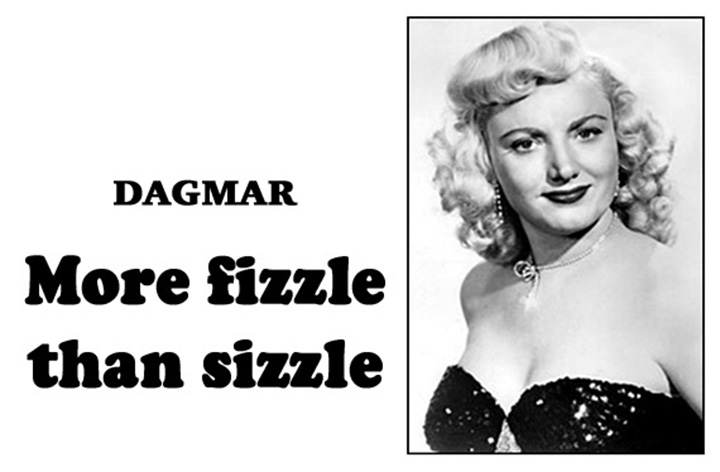
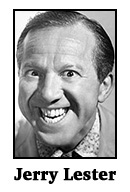 Lester was an energetic, often frantic comedian who thrived on the double entendre and the double take. He was surprised when Dagmar's deadpan comebacks stole the show. Lester became jealous and the show went down in flames in about two years.
Lester was an energetic, often frantic comedian who thrived on the double entendre and the double take. He was surprised when Dagmar's deadpan comebacks stole the show. Lester became jealous and the show went down in flames in about two years.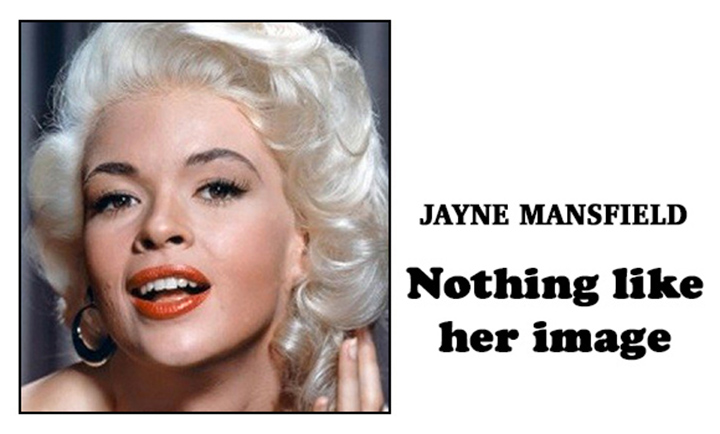 On January 23, 1964 Mariska Hargitay was born in Los Angeles. Six weeks earlier her parents visited Cleveland for an appearance on "The Mike Douglas Show." That's when, where and why I met Jayne Mansfield. Her pregnancy was only one reason she was not the woman I'd expected.
On January 23, 1964 Mariska Hargitay was born in Los Angeles. Six weeks earlier her parents visited Cleveland for an appearance on "The Mike Douglas Show." That's when, where and why I met Jayne Mansfield. Her pregnancy was only one reason she was not the woman I'd expected.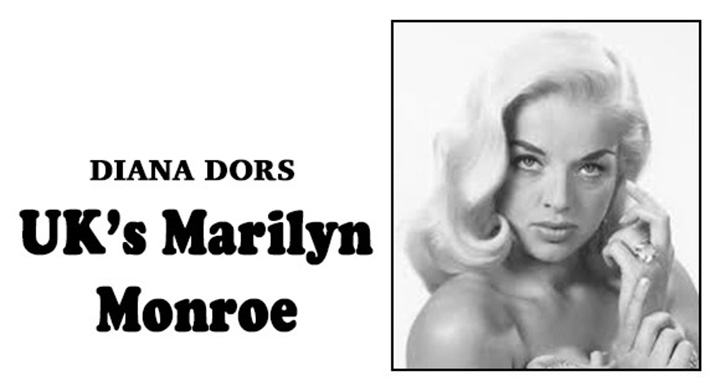 In July, 1963,
In July, 1963, 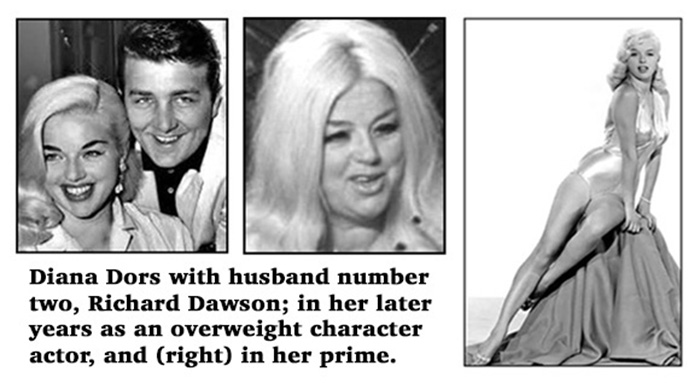
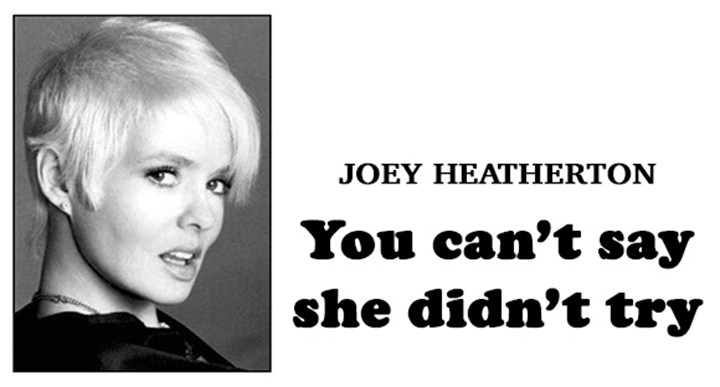
 Heatherton’s acting career hit a brick wall, but she took to singing and dancing in skimpy outfits and had some success with her Las Vegas-type nightclub act.
Heatherton’s acting career hit a brick wall, but she took to singing and dancing in skimpy outfits and had some success with her Las Vegas-type nightclub act.